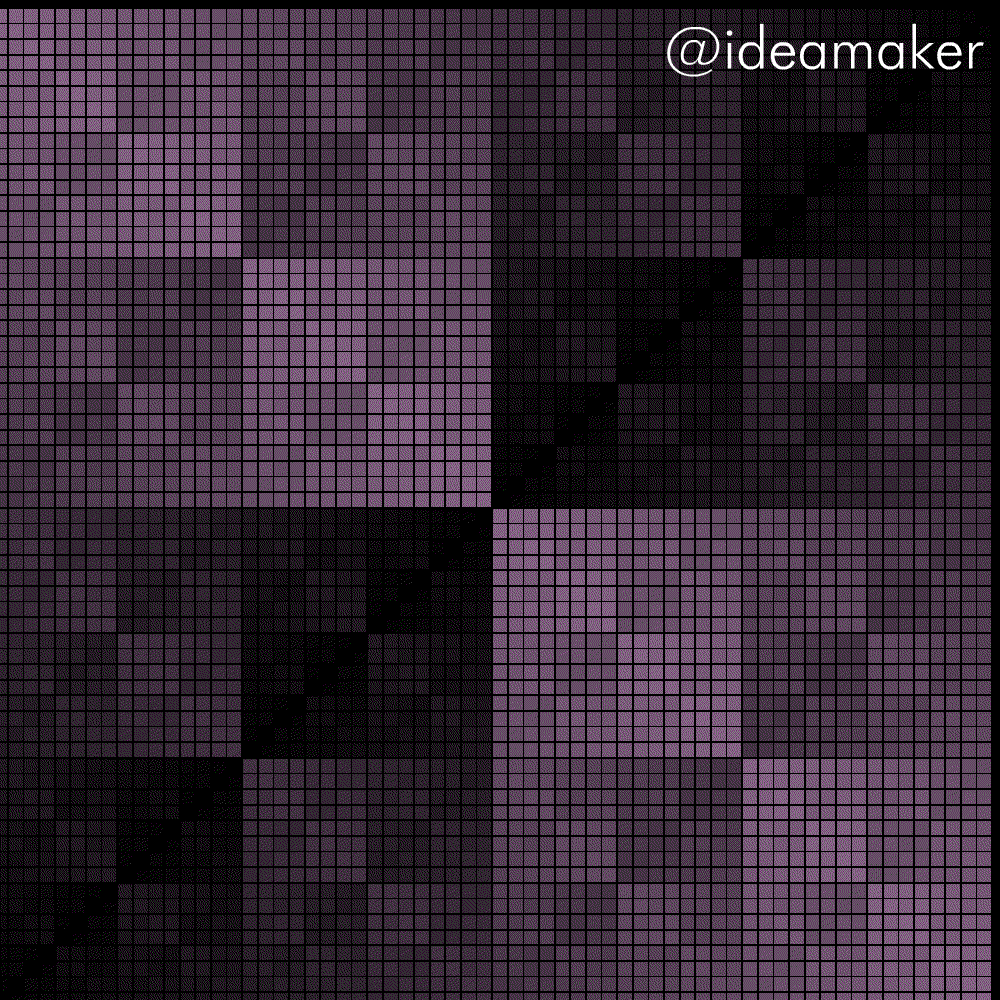▲ ▲ ▲ Galois fields are just adorable [Beauty in Mathematics]
Heyo, Steemians!
Do you remember my post about finite fields and multiplication tables?
https://steemit.com/education/@ideamaker/finit-fields-in-beautiful-pictures-48-lines-of-code
It was real fun and so I have decided to make some scientific-popular content about special type of fields - Galois fields.
So instead of fields based on some prime numbers these fields are based on some irreducible polynome. So when we talk about elements of prime modulo ring field, we talk about them like a "numbers" (mathematitians don't be angry at me here :D). As for Galois field - its elements are "polynomes" (almost).
To sum up: imagine we get some specific irreducible polynome. Now the elements of Galois field are all possible remainders of the division on such a polynome.
Where Galois fields are used?
- In number theory
- In cryptography
- In QR codes
How to visualize?
So if we want to visualize some operation tables like in previous post - we should implement operations of modular arithmetic on polynomes T_T
However in GF(2) addition can removed by XOR operation if we evaluate bit sets of numbers and quotients of polynomes.
For example: 00011 transforms to 0x^4 + 0x^3 + 0x^2 + 1x + 1 and back
Indeed, let's add up two polynomes over GF(2):
f(x) = x^3 + x + 1
g(x) = x^2 + x
f(x) + g(x) = x^3 + x^2 + 1 ---> 1011 xor 0110 = 1101
Works!
So lets take the code from post "Finite fields in beautiful pictures [48 lines of code]" and replace
( x*y ) % mod by x^y. Easy!
For visualisation of GF(64) addition table you need set mod = 64.
You don't need to write x^y % mod. Think why :-)
I worked on the design of my addition table and added height interpolation. The higher (in sense of bypass order ) value of element - the taller its bar.
Just look at this:

Interpolationg values of addition table for GF(64) with both bar color and height :-)
What do you think about this article?
Thank you for your attention!
Follow my blog @ideamaker for more math and programming :-)
The subject of Galois Fields is very rich and interesting. Too bad such a great mind was lost at such a young age.
Indeed, Évariste Galois had great potential. Who knows how far could he go in his research?
And the topic of this article is very interesting for me. You know, I made previous post here about simple finite fields and haven't get any feedback ( who likes boring maths? :D ). Despite of it I got inspiration to make the second part post :D
I think most people don't know about this subject because you would probably have to study math to be interested.
Well, in my opinion, to understand basic things with finite fields doesn't require some serious university education. And I'm sort of trying to make math-popular content here :-)
P.S. However, in such a case some theorems and statements should be just believed :-)